How did the Universe begin?
Is there an origin to time itself, and if so, what did it look like?
“In the beginning the Universe was created. This has made a lot of people very angry and been widely regarded as a bad move.” –Douglas Adams
It’s only human to ask the most fundamental of all questions: where did all this come from? And we like to think we know the answer; it all came from the beginning.

But if you think about it for a little while, that simplistic answer — an answer that at first glance, might appear to be a tautology — presumes something very important about our Universe: that it had a beginning!
For a long time, scientifically, it didn’t appear that we knew whether that was true or not. The Universe could have had a beginning, before which nothing existed (or, at the very least, nothing as we understand it to be), or it could have existed eternally, like an infinite line extending in both directions, or it could have been cyclic like the circumference of a circle, repeating over and over again infinitely.
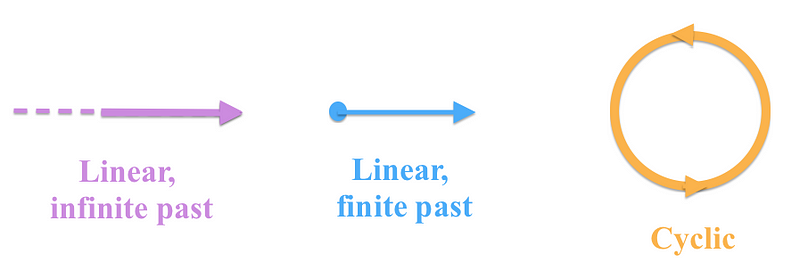
Multiple competing ideas were, for a time, all consistent with the observations. Most prominent among them were the Big Bang (which favored a finite past) and the Steady-State (which favored an infinite past) models, but there was no surefire way to confirm or refute them for a time.
But then, everything changed in the 1960s, when a low-level of microwave radiation was found emanating from all directions in the sky.
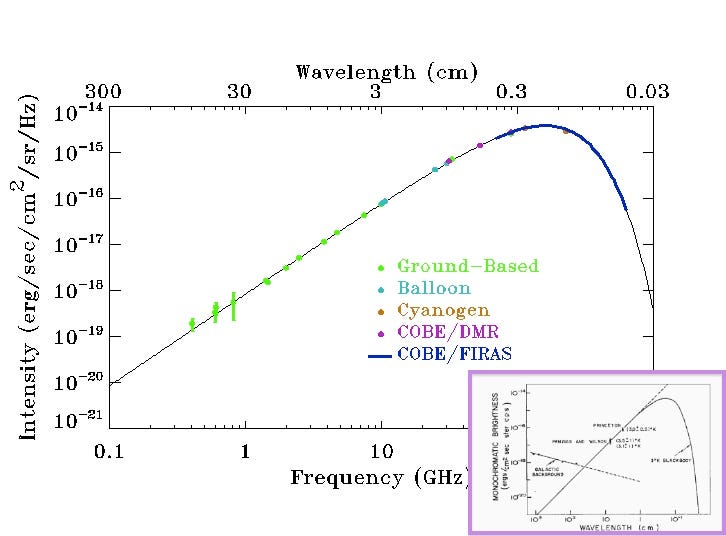
This radiation was the same magnitude everywhere, the same in all directions, and just a few degrees above absolute zero. As better data came in, we learned that it followed a blackbody spectrum, and was not only consistent with being the leftover glow from the Big Bang, but was inconsistent with all other alternative explanations. It started to look like there was a beginning after all.
Here’s why.

According to the Big Bang, the Universe was hotter, denser, more uniform and smaller in the past, and only looks the way it does today because it’s been expanding, cooling, and experiencing gravitation (and gravitational collapse on scales small and large) for so long.

Back in the early stages, it was once so hot that even neutral atoms couldn’t form without being blasted apart. Even earlier than that, because radiation’s wavelength stretches as the Universe expands, today’s microwave radiation was so short-wavelength that photons were more energetic than even matter was in the young Universe.

And at still earlier times, it was too energetic to form atomic nuclei, or even bound protons and neutrons.
And if we continue extrapolating all the way back, we’d arrive at the beginning, where not only was all of space contracted down to a point, but where we encountered a singularity. At first glance, it appears that it doesn’t even matter what dominates the Universe; a singularity appears inevitable!

Singularities are incredibly interesting, because they’re where the overriding law of gravitation in the Universe — Einstein’s General Relativity — breaks down, and becomes mathematical nonsense. Relativity, remember, is the theory that describes space and time. But at singularities, not only do spatial dimensions cease to exist, but so does time. In other words, asking questions like “what came before this” is as nonsensical as asking “where are we” if you take away space, or “what’s north of the north pole?”
Indeed, this is the argument that Paul Davies — Australia’s Carl Sagan — makes when he claims that there is no “before” the Big Bang, because the Big Bang is where time began. But as interesting as this argument is, we know that the Big Bang isn’t where time began anymore. Because ever since we’ve made modern, detailed measurements of the fluctuations in the cosmic microwave background — in the Big Bang’s leftover glow — we’ve learned that this extrapolation to a singularity is wrong.
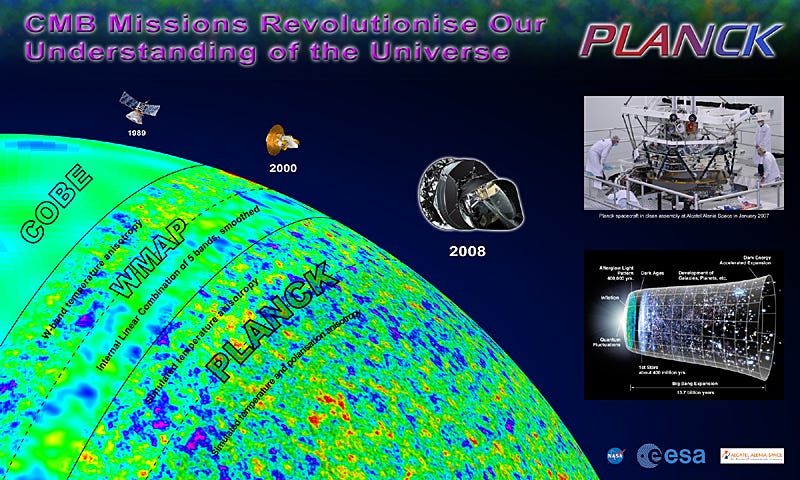
You see, these patterns of fluctuations can tell us a number of things about the properties of the Universe when it was very young: how much matter was present in protons, neutrons and electrons, what its spatial curvature is, how much dark matter/dark energy there is, how many hot neutrino species there are, etc. But they can also tell us whether there was a maximum temperature the Universe reached back in its early hot, dense, expanding state.

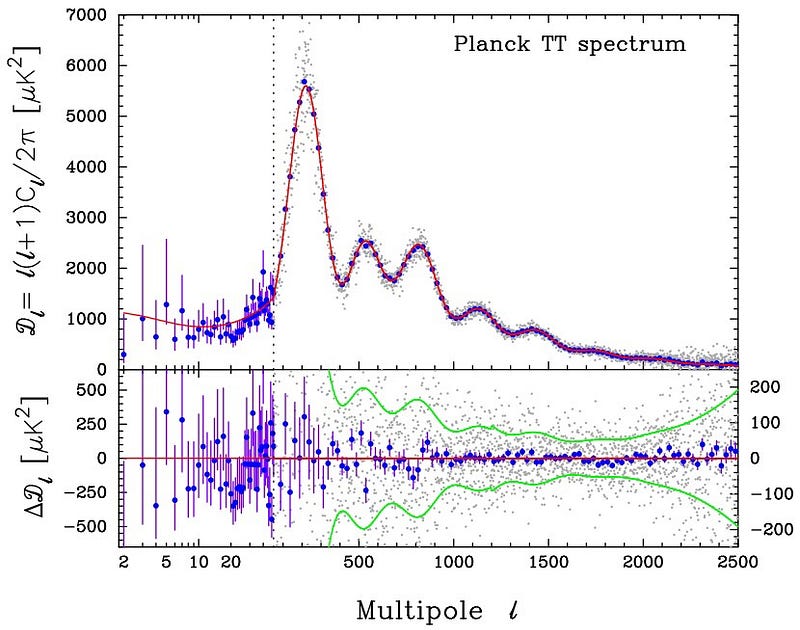
According to the data that’s been in since WMAP (and Planck has confirmed it), the Universe “only” ever achieved a maximum temperature of around 10^29 Kelvin. You might think this number is huge, and I’ll grant you that it is pretty big. But it’s still about a factor of 1,000 too small to get the Universe into a state that could possibly become a singularity.
In fact, the particulars of this tell us that not only did time not begin at the Big Bang, but that we know what happened before the Big Bang: there was a period of cosmic inflation, where a tremendous amount of energy intrinsic to space itself dominated the Universe, and it expanded exponentially quickly at a fantastically large rate!
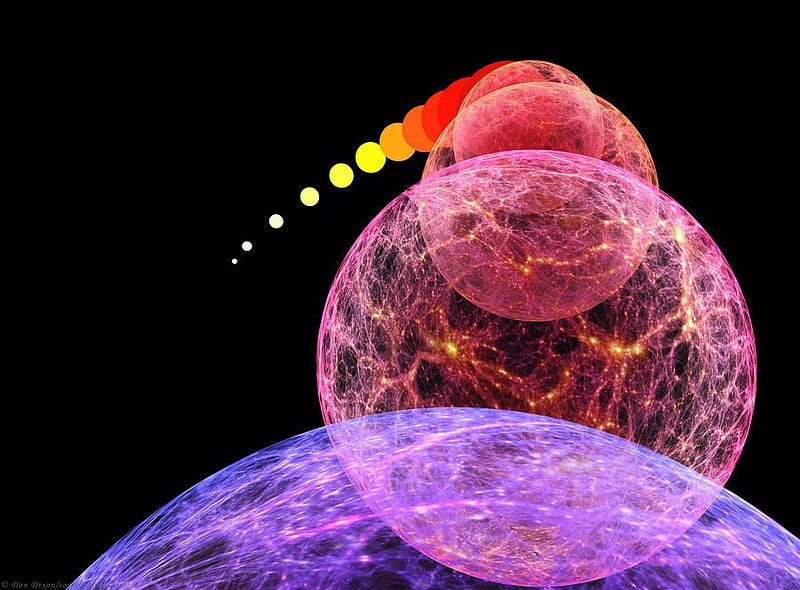
But there’s something else that inflation — our best scientific theory as to what preceded the Big Bang (now, possibly, with extra evidence) — tells us about where this all came from that is, perhaps, very surprising. Let’s zoom into that graph I generated earlier of how the Universe grows when it’s dominated by different types of energy.

It tells us that rather than a singularity at “t=0”, or where the Big Bang occurred, it tells us that the Universe existed in an inflationary state, or a state where it was exponentially expanding, for an indeterminately long amount of time.
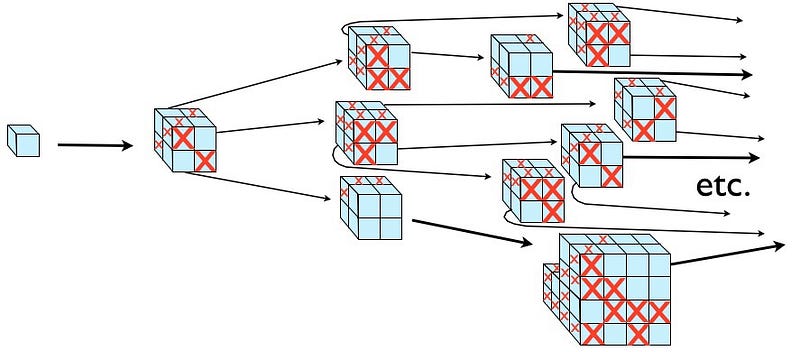
Now, there are a wonderful number of new questions that arise with this knowledge:
First, was the inflationary state a constant one? As in, was the Universe inflating at the same rate everywhere and for long periods of time? Or was it inflating in ways that changed very quickly and varied from location-to-location?
Second, did the inflationary state last forever going backwards? Inflation has the potential to be eternal, and in fact we have good reason to believe that — in the majority of parts of the Universe — it is eternal to the future. But what about to the past? Was it always inflating in some form or other, or was there a non-inflationary state preceding it that gave rise to inflation?
Third, we can look at dark energy, today, as form of exponential expansion. Are these two inflationary stages related, and will our dark energy expansion ever give rise to a truly inflation-like stage again, rejuvenating it in some sort of cycle?

Observationally, we don’t know the answer to any of this. The Universe we can observe only contains information remaining from the final ~10^-34 seconds (give or take a few orders of magnitude) of inflation; whatever occurred prior to that is wiped out by the nature of inflation. And theoretically, we don’t fare much better. There is a theorem that tells us that an inflationary Universe is past-timelike incomplete: that an ever-expanding Universe must have began from a singularity.
But whether that means an inflating Universe couldn’t have lasted forever or whether that means our current rules of physics are not applicable to figuring out whether it lasted forever, had a beginning or is cyclical are unknown. It’s even possible that time is cyclical, and that the cycles change with each iteration!
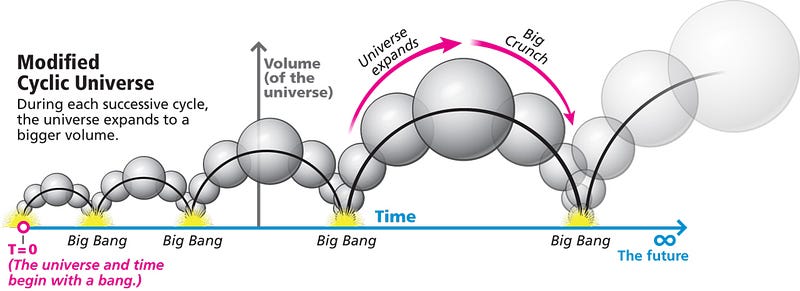
But even though we can trace back our cosmic history all the way to the moment of the Hot Big Bang, and even before that (a little bit) to the epoch of cosmic inflation, that’s where our knowledge ends.
So thousands of years later, we’re right back to where we started.

Did time have a beginning? We not only don’t have the answer, we don’t have the prospect of observations that could tell us, and our current theories only tell us where our predictive power breaks down, not what the answer is. So we have the same three possibilities that philosophers and theologans have pondered for as long as history has been recorded: time is finite, time is infinite, or time is cyclical. The only thing we know is that if there was a singularity in the past, it didn’t have anything to do with our Hot Big Bang that every particle of matter-and-energy in our observable Universe is traceable to.
And unless we figure out a new way to gain information about what happened before the Universe observable to us existed in any meaningful sense, the answer may forever be beyond the reach of what is knowable.
Enjoyed this? Leave a comment at the Starts With A Bang forum on Scienceblogs!





